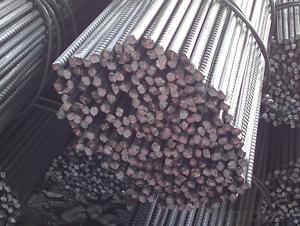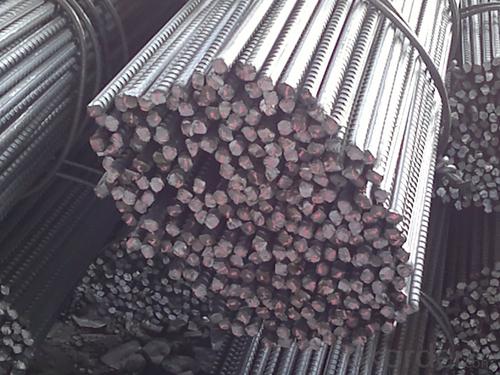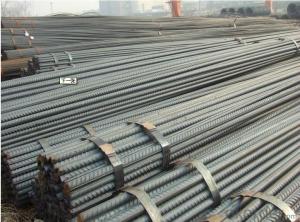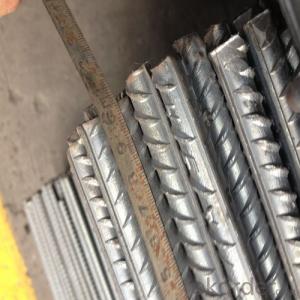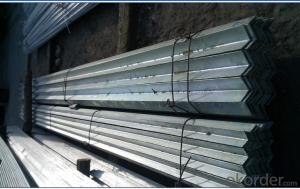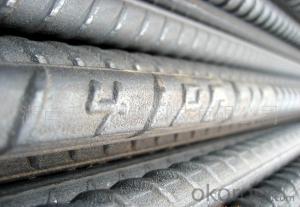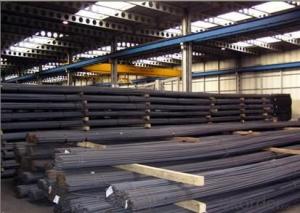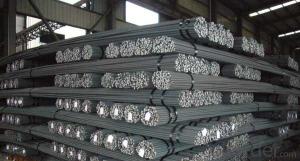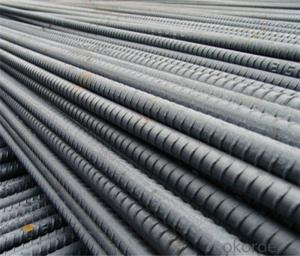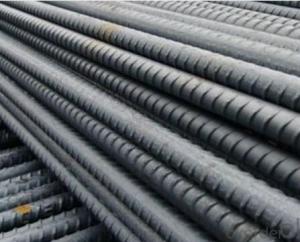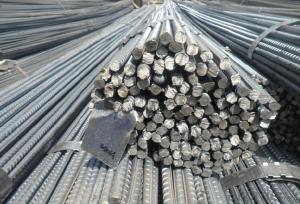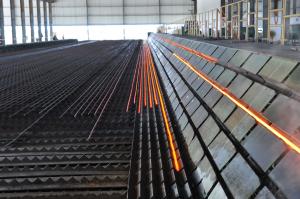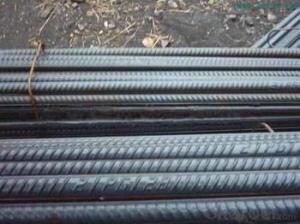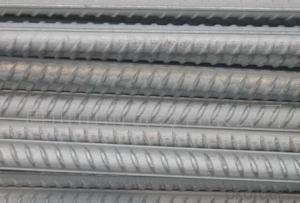A615 deformed steel bars for construction
- Loading Port:
- Tianjin
- Payment Terms:
- TT or LC
- Min Order Qty:
- 25 m.t.
- Supply Capability:
- 100000 m.t./month
OKorder Service Pledge
OKorder Financial Service
You Might Also Like
Product Description:
OKorder is offering A615 deformed steel bars for construction at great prices with worldwide shipping. Our supplier is a world-class manufacturer of steel, with our products utilized the world over. OKorder annually supplies products to European, North American and Asian markets. We provide quotations within 24 hours of receiving an inquiry and guarantee competitive prices.
Product Applications:
A615 deformed steel bars are ideal for structural applications and are widely used in the construction of buildings and bridges, and the manufacturing, petrochemical, and transportation industries.
Product Advantages:
OKorder's deformed steel bars are durable, strong, and resist corrosion.
Main Product Features:
· Premium quality
· Prompt delivery & seaworthy packing (30 days after receiving deposit)
· Corrosion resistance
· Can be recycled and reused
· Mill test certification
· Professional Service
· Competitive pricing
Product Specifications:
Specifications of HRB400 Deformed Steel Bar:
Standard | GB | HRB400 | |
Diameter | 6mm,8mm,10mm,12mm,14mm,16mm,18mm,20mm, 22mm,25mm,28mm,32mm,36mm,40mm,50mm | ||
Length | 6M, 9M,12M or as required | ||
Place of origin | Hebei, China mainland | ||
Advantages | exact size, regular package, chemical and mechanical properties are stable. | ||
Type | Hot rolled deformed steel bar | ||
Brand name | DRAGON | ||
Chemical Composition: (Please kindly find our chemistry of our material based on HRB500 as below for your information)
Grade | Technical data of the original chemical composition (%) | ||||||
C | Mn | Si | S | P | V | ||
HRB400 | ≤0.25 | ≤1.60 | ≤0.80 | ≤0.045 | ≤0.045 | 0.04-0.12 | |
Physical capability | |||||||
Yield Strength (N/cm²) | Tensile Strength (N/cm²) | Elongation (%) | |||||
≥400 | ≥570 | ≥14 | |||||
Theoretical weight and section area of each diameter as below for your information:
Diameter(mm) | Section area (mm²) | Mass(kg/m) | Weight of 12m bar(kg) |
6 | 28.27 | 0.222 | 2.664 |
8 | 50.27 | 0.395 | 4.74 |
10 | 78.54 | 0.617 | 7.404 |
12 | 113.1 | 0.888 | 10.656 |
14 | 153.9 | 1.21 | 14.52 |
16 | 201.1 | 1.58 | 18.96 |
18 | 254.5 | 2.00 | 24 |
20 | 314.2 | 2.47 | 29.64 |
22 | 380.1 | 2.98 | 35.76 |
25 | 490.9 | 3.85 | 46.2 |
28 | 615.8 | 4.83 | 57.96 |
32 | 804.2 | 6.31 | 75.72 |
36 | 1018 | 7.99 | 98.88 |
40 | 1257 | 9.87 | 118.44 |
50 | 1964 | 15.42 | 185.04 |
Usage and Applications of HRB400 Deformed Steel Bar:
Deformed bar is widely used in buildings, bridges, roads and other engineering construction. Big to highways, railways, bridges, culverts, tunnels, public facilities such as flood control, dam, small to housing construction, beam, column, wall and the foundation of the plate, deformed bar is an integral structure material. With the development of world economy and the vigorous development of infrastructure construction, real estate, the demand for deformed bar will be larger and larger..
Packaging & Delivery of HRB400 Deformed Steel Bar:
Packaging Detail: products are packed in bundle and then shipped by container or bulk vessel, deformed bar is usually naked strapping delivery, when storing, please pay attention to moisture proof. The performance of rust will produce adverse effect.
Each bundle weight: 2-3MT, or as required
Payment term: TT or L/C
Delivery Detail: within 45 days after received advanced payment or LC.
Label: to be specified by customer, generally, each bundle has 1-2 labels
Trade terms: FOB, CFR, CIF
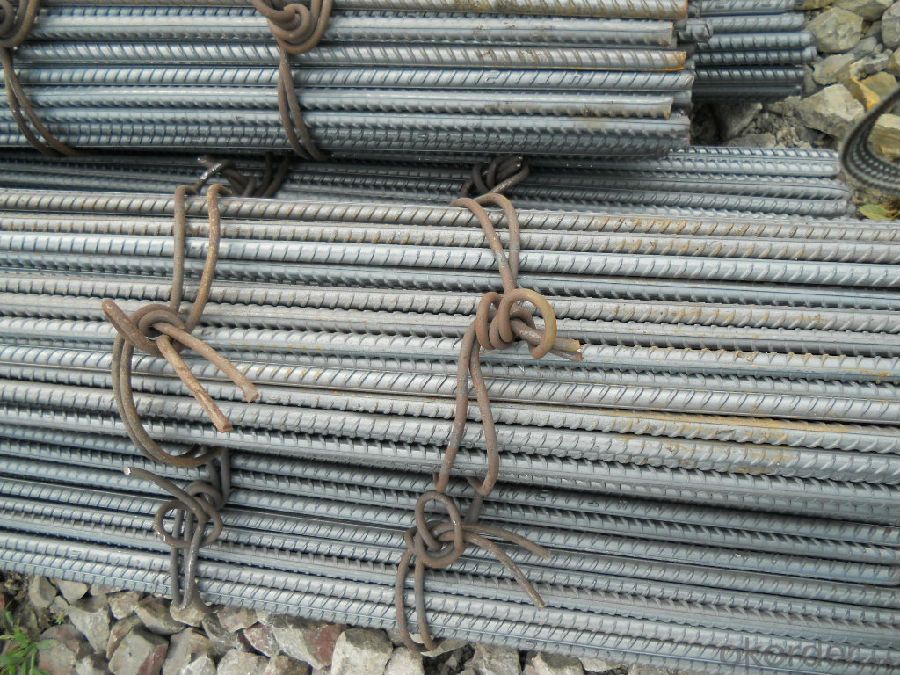
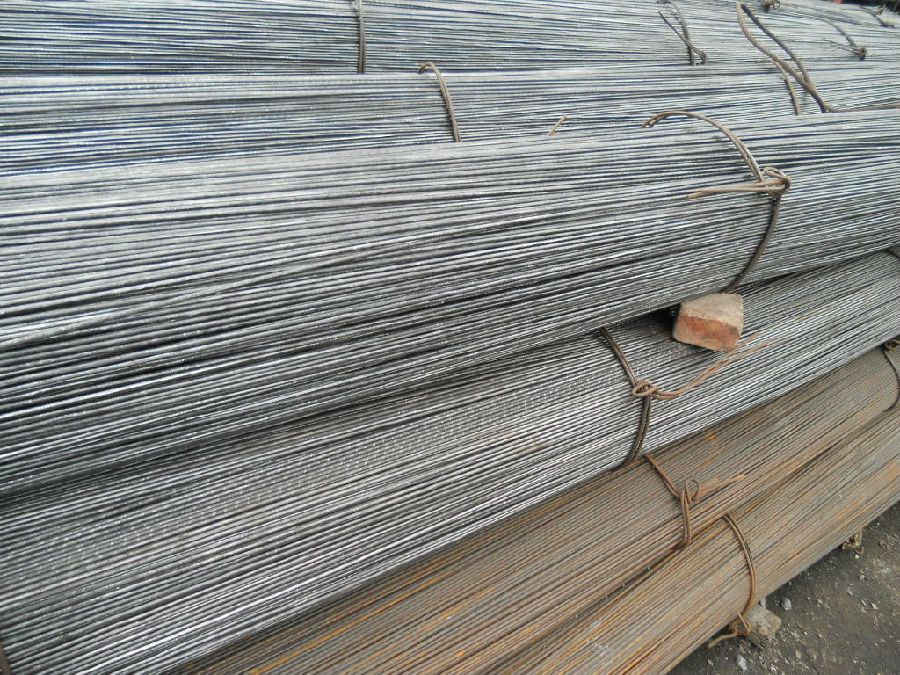
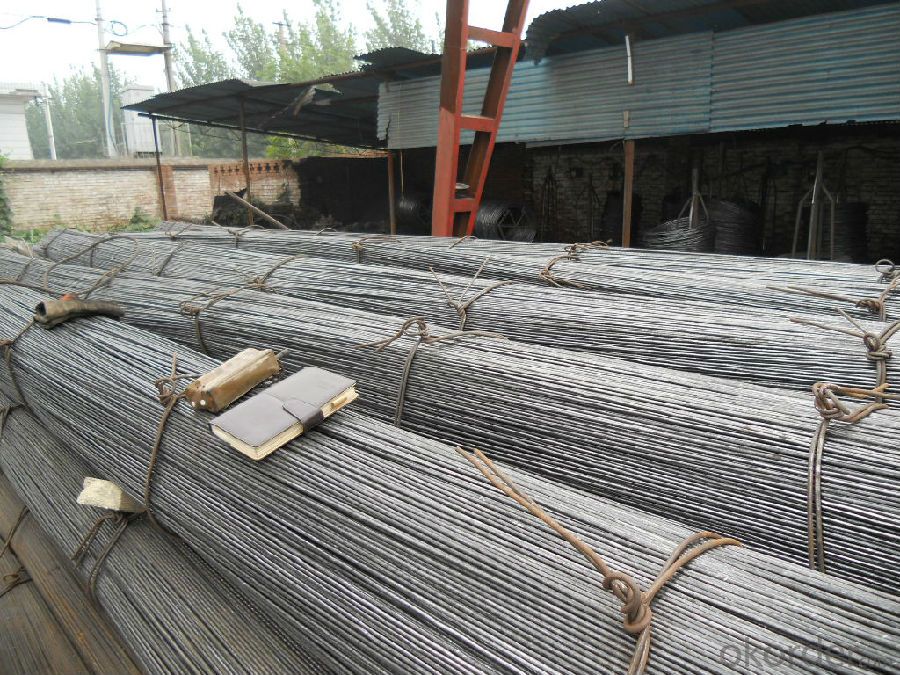
FAQ:
Q1: What makes stainless steel stainless?
A1: Stainless steel must contain at least 10.5 % chromium. It is this element that reacts with the oxygen in the air to form a complex chrome-oxide surface layer that is invisible but strong enough to prevent further oxygen from "staining" (rusting) the surface. Higher levels of chromium and the addition of other alloying elements such as nickel and molybdenum enhance this surface layer and improve the corrosion resistance of the stainless material.
Q2: Can stainless steel rust?
A2: Stainless does not "rust" as you think of regular steel rusting with a red oxide on the surface that flakes off. If you see red rust it is probably due to some iron particles that have contaminated the surface of the stainless steel and it is these iron particles that are rusting. Look at the source of the rusting and see if you can remove it from the surface.
- Q: What is the average tensile strength of steel rebars?
- The average tensile strength of steel rebars typically ranges from 400 to 600 megapascals (MPa). However, it is important to note that the specific tensile strength can vary depending on the grade and type of steel used in the manufacturing process. Higher grades of steel rebars can have tensile strengths exceeding 600 MPa. Additionally, factors such as the diameter and surface condition of the rebars can also influence their tensile strength.
- Q: Can steel rebars be used in wind turbine tower construction?
- Yes, steel rebars can be used in wind turbine tower construction. Rebars provide strength and structural support to the tower, ensuring its stability and ability to withstand strong winds.
- Q: Can steel rebars be used in port infrastructure construction?
- Steel rebars are an indispensable element of port infrastructure construction. They are widely utilized in the construction sector, particularly in port infrastructure projects. These rebars play a crucial role in providing strength and reinforcement to concrete structures, thus making them highly suitable for the creation of durable and resilient port facilities. By reinforcing concrete slabs, beams, and columns, they ensure that these structures can withstand the immense loads and continuous exposure to water and other environmental factors present in port areas. Moreover, steel rebars exhibit exceptional tensile strength, making them well-equipped to handle the dynamic forces encountered in port infrastructure, such as wharves, piers, and docks. All in all, steel rebars are an integral and essential component in the construction of robust and long-lasting port facilities.
- Q: Can steel rebars be used in structures with limited construction equipment?
- Yes, steel rebars can be used in structures with limited construction equipment. Steel rebars are versatile and can be easily handled and installed with minimal equipment. They can be cut to size using handheld tools such as bolt cutters or torches, eliminating the need for heavy machinery. Furthermore, steel rebars are lightweight, making them easier to transport and maneuver on-site. Their flexibility allows for various construction techniques, such as tying them together with wire or using wire mesh to reinforce concrete. Overall, steel rebars are a practical choice for structures with limited construction equipment, providing strength and durability without requiring extensive machinery.
- Q: How do steel rebars help in preventing cracks in concrete?
- Steel rebars help in preventing cracks in concrete by providing reinforcement and increasing the tensile strength of the structure. When concrete is subjected to tensile forces, it tends to crack. However, the presence of steel rebars within the concrete helps distribute these forces, absorbing the tension and preventing cracks from forming or growing. The rebars act like a skeleton, enhancing the structural integrity and durability of the concrete, ensuring it can withstand various loads and external pressures without significant damage.
- Q: How are steel rebars protected from fire damage?
- Steel rebars are protected from fire damage through various methods. One commonly used method is the application of fire-resistant coatings. These coatings are specifically designed to withstand high temperatures and prevent the steel from reaching its critical temperature, which is when it starts to lose its structural integrity. Another method is the use of fire-resistant concrete encasement. In this method, the rebars are embedded within a layer of concrete that has been specifically designed to resist fire. This concrete acts as a barrier, preventing the heat from directly reaching the steel rebars and thus protecting them from fire damage. Additionally, fire-resistant wraps or blankets can be used to provide temporary protection to steel rebars during construction. These wraps are made from fire-resistant materials and are applied directly to the rebars, creating a barrier that prevents direct exposure to fire. It is important to note that the level of fire protection required for steel rebars depends on the specific building codes and regulations in place. These codes typically specify the minimum fire resistance rating that must be achieved for structural elements, including rebars, in order to ensure the safety of the building and its occupants.
- Q: Can steel rebars be used in structures with high sulfate content in soil or water?
- Steel rebars should generally not be used in structures with high sulfate content in soil or water. Sulfates can react with the steel and cause it to corrode rapidly, leading to structural damage and potential failure. To mitigate this risk, alternative materials such as stainless steel or fiber-reinforced polymer rebars may be recommended for use in such environments.
- Q: How much is the minus difference per ton of thread steel?
- Steel is commonly known as hot rolled ribbed bar, belonging to the small steel steel, mainly used for steel reinforced concrete structure frame.
- Q: What is the role of steel rebars in preventing concrete creep?
- Steel rebars play a crucial role in preventing concrete creep by providing reinforcement and stability to the concrete structure. The rebars act as a framework within the concrete, distributing the tensile forces and preventing the concrete from deforming or cracking over time. Additionally, steel rebars help to control the shrinkage and expansion of concrete, minimizing the potential for creep and ensuring the long-term durability and integrity of the structure.
- Q: Can steel rebars be galvanized for added protection?
- Yes, steel rebars can be galvanized for added protection. Galvanizing is a process where a thin layer of zinc is applied to the surface of the steel rebar. This zinc coating acts as a sacrificial layer that provides protection against corrosion. It forms a barrier between the steel and the environment, preventing moisture and other corrosive elements from reaching the surface of the rebar. Galvanized steel rebars are commonly used in construction projects, particularly in areas where corrosion is a concern, such as coastal regions or environments with high humidity. The galvanizing process enhances the longevity and durability of the steel rebar, making it resistant to rust and corrosion.
Send your message to us
A615 deformed steel bars for construction
- Loading Port:
- Tianjin
- Payment Terms:
- TT or LC
- Min Order Qty:
- 25 m.t.
- Supply Capability:
- 100000 m.t./month
OKorder Service Pledge
OKorder Financial Service
Similar products
Hot products
Hot Searches
Related keywords
